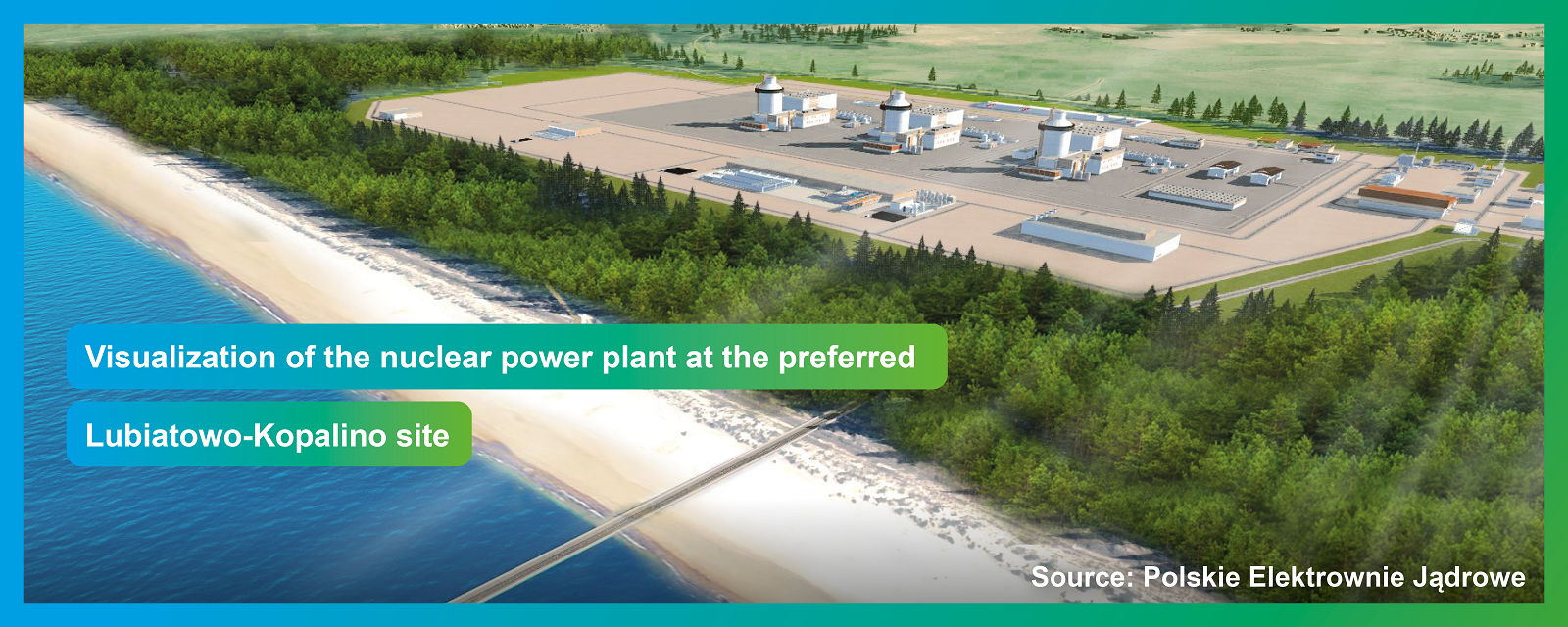Poland’s first nuclear power plant will be safe.
The National Atomic Energy Agency (PAA) has issued a general opinion on the safety analysis of the nuclear power plant in Pomerania. „This is the first such opinion in the country in the field of nuclear safety. The scope of the planned, independent verification of safety analyses presented in the application submitted by the Polish Nuclear Power Plants was deemed correct,” a press release issue by PEJ said.
Polish Nuclear Power Plants (PEJ) stated that this application is one of the elements of the process of obtaining a permit for the construction of a nuclear facility. In accordance with art. 36d of the Atomic law the investor is obliged to ensure independent verification of the analysis carried out before proceeding to start constructing a nuclear power plant.
„The first positive consideration of this type of proposal confirms that in these most important issues, including, above all, security, we will adhere to the most demanding standards,” said Anna Łukaszewska-Trzeciakowska, Government Plenipotentiary For Strategic Energy Infrastructure. „In the nuclear industry, safety is a top priority, and it is no different with the investment we are implementing. From the very beginning, we have been very conscientious when it comes to security. The determination by the State Atomic Energy Agency that the scope and details of the planned, independent verification of safety analyses are correct confirms the high quality of the work we have done and allows us to move on to further tasks so that the nuclear power plant in Pomerania is a completely safe facility,” said Łukasz Młynarkiewicz, acting President of the Polish Nuclear Power Plants.
„The purpose of the verification of safety system analyses is to ensure the highest possible standards for the safe operation of a nuclear power plant. The analyses presented in the PEJ proposal included both deterministic analyses, i.e. concerning how a nuclear reactor would behave in various, even the most unlikely, situations, as well as so-called probabilistic analyses, which allow to ascertain the strengths and weaknesses of a given installation, along with assessing the probability of occurrence of various events and their consequences. The presented scope of the planned verification of security analyses was assessed as correct,” PEJ said.
PEJ explains that safety analyses are part of the process of assessing the safety of a nuclear facility, carried out systematically at the design stage and then during the operation of the facility. Their aim is to ensure that all nuclear safety requirements are met from the start to the end of the operation of the project. „In practice, safety analyses boil down to the creation of computational models that map the functioning of a nuclear facility under all possible conditions, including emergency ones. In addition, many calculations are carried out using verified and validated analytical tools. The analysis of the results obtained is then compared with the requirements of nuclear safety,” the PEJ press release explained.
Poles want to have the first reactor in Pomerania in 2033 and 6-9 GW of nuclear power in 2043. The technology chosen for the Pomeranian location is AP1000 from the American Westinghouse, which is a partner of the project together with Bechtel, the operator of nuclear facilities. This cooperation is waiting for the project agreement to be announced in autumn 2023.
Polish Nuclear Power Plants / Wojciech Jakóbik
Poland’s fist negative energy prices
„A day to remember. Tomorrow, for the first time in history, as part of market coupling, we we will have negative energy prices on the spot market from 11:00 to 16:00 (…) a change in the mix changes the market,” Anna Łukaszewska-Trzeciakowska, Government Plenipotentiary for Strategic Energy Infrastructure.
A negative price means that the producer pays the customer for the energy consumption. It is the power plants that pay extra to produce electricity because of its excess on the market.
In Poland, negative energy prices have been allowed to operate since 2019. This is due to art. 10 of regulation 2019/943 on the internal electricity market, which adapted Polish law to EU requirements. The document abolished the current minimum electricity prices, which amounted to PLN 70 per MWh.
On Sunday before noon, according to PSE data, Polish PVs were operating at a capacity of more than 7 GW, and wind farms – 2.1 GW with a demand of 15 GW.
Polish Press Agency / Jacek Perzyński
Energa Kogeneracja will partner up to drop coal in Elbląg
Energa Kogeneracja, a subsidiary of the Orlen Group, wants to select a general contractor for a natural gas-powered cogeneration system with a total capacity of approx. 30 MWt (thermal power) and 30 MWe (electrical power) in Elbląg. The construction of the unit will allow the Elbląg power plant to phase out coal.
According to the announcement, the contractor of the unit will have approx. one and a half years from the moment the contract enters into force. On top of constructing a cogeneration system with three internal combustion engines (approx. 10 MW each), the company selected in the tender will also have to provide maintenance services for a period of 10 years. The construction of the cogeneration system will be carried out in the Engineering, Procurement, Construction formula, explained Energa Kogeneracja, as quoted by ISBnews.
The announced gas engine block (BSG) is the second gas source to be built in EC Elbląg as part of the investment programme from 2020. The first was a reserve-peak boiler plant with a capacity of approx. 114 MWt. Both of these gas sources, together with the BB20p biomass unit built in 2014 with a heating capacity of 42 MWt – working as baseload – will constitute a new, targeted structure of heat production sources in EC Elbląg.
The power plant in Elbląg was launched in 1928. It burns energy coal/biomass/gas to produce electricity and heat in high-efficiency cogeneration.
Isbnews / Energa / Jędrzej Stachura









